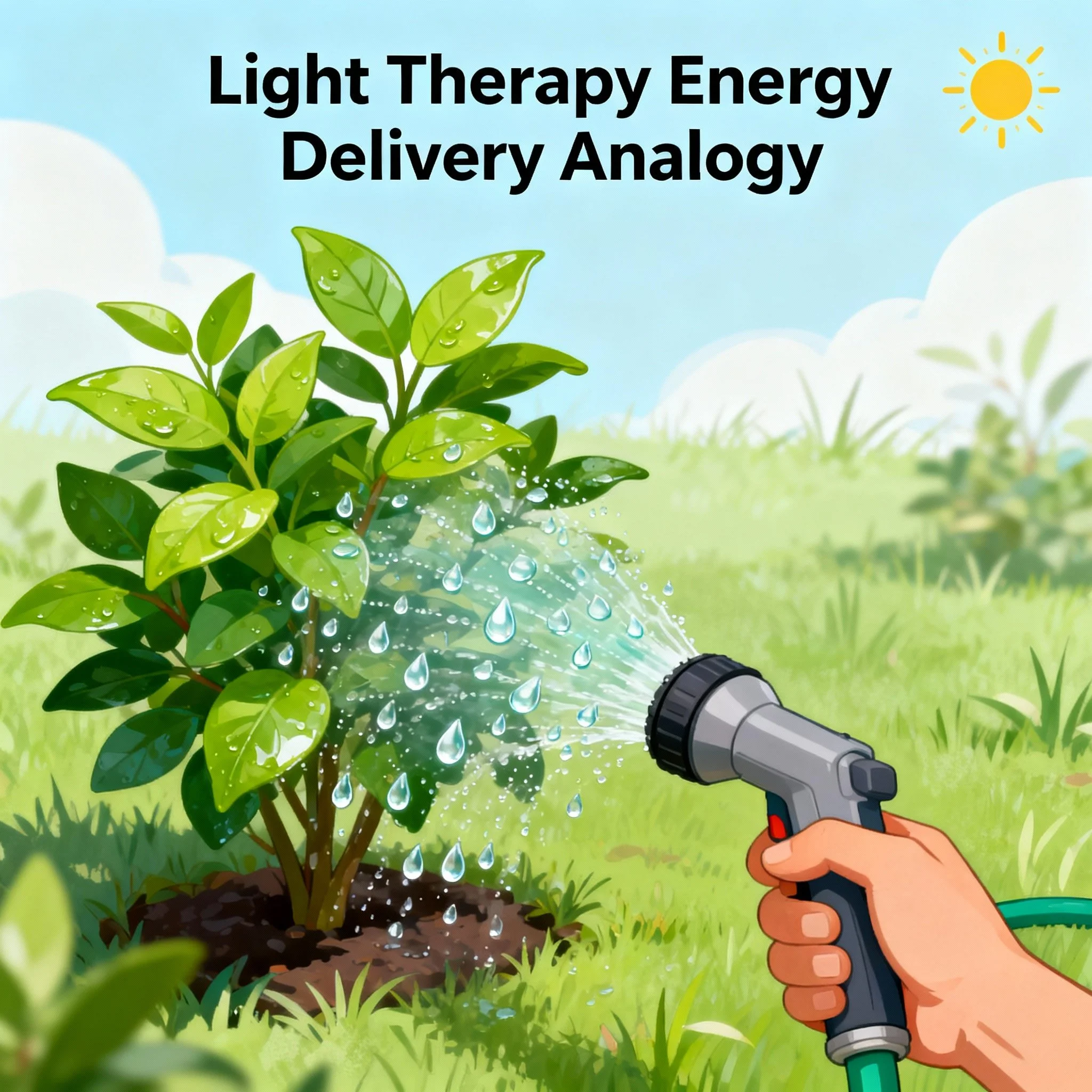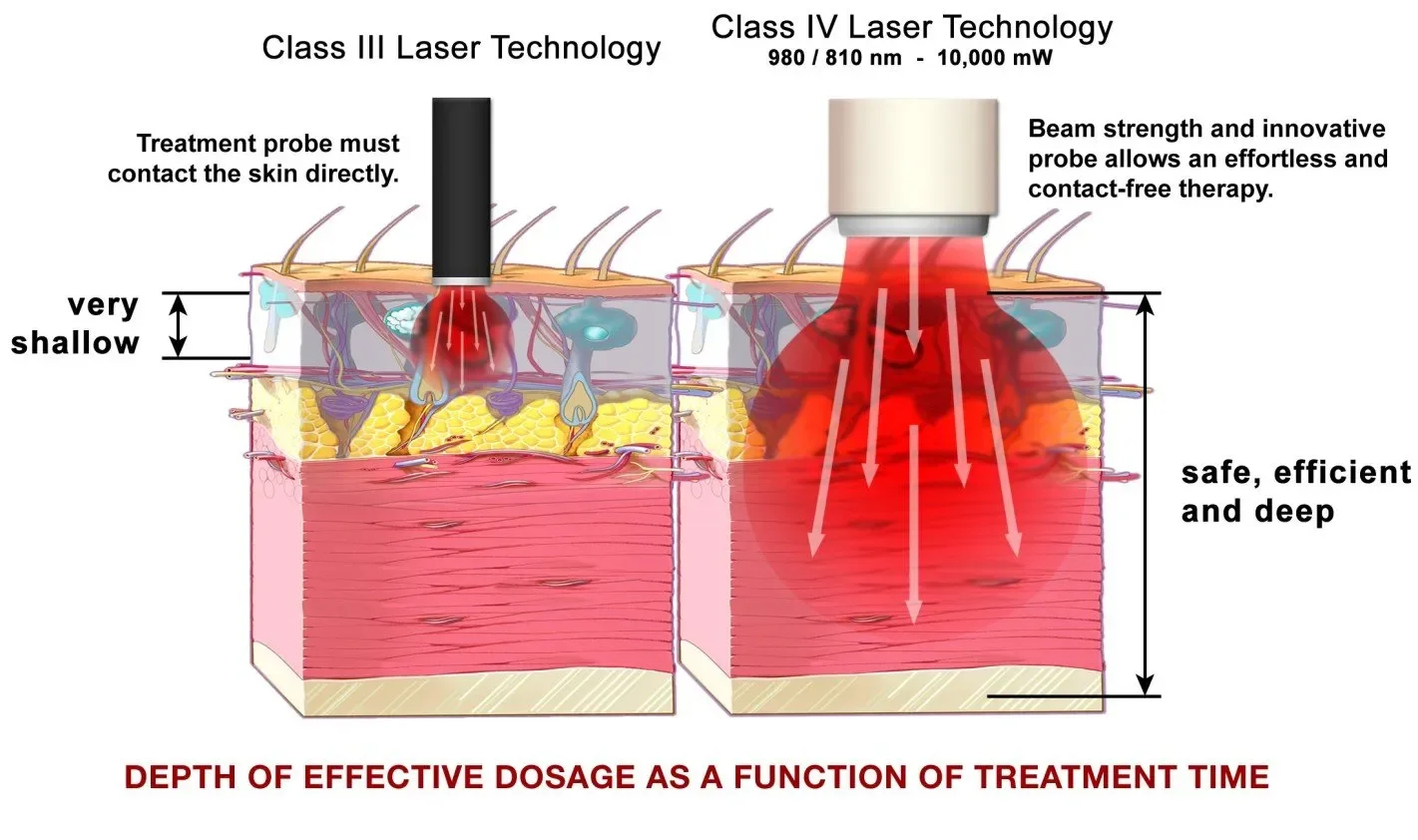IN THIS LESSON
Think of light therapy like watering a garden. You need to know three things:
Irradiance (W/cm²) - How fast the water comes out of the hose
Time - How long you water each spot
Fluence (J/cm²) - The total amount of water each area gets
The fluence is calculated by multiplying irradiance times time. This tells you the total energy delivered to the tissue.
The Right Amount Matters
Light therapy follows something called the "Goldilocks principle" - not too little, not too much, but just right. Too little light won't help, but too much light can actually make things worse by stopping the healing process.
Research shows that the best doses are usually between 3-10 joules per square centimeter at the cellular level, but this number changes based on:
How deep the light needs to go
What type of tissue is being treated
The person's skin color
Whether there's hair in the treatment area
Light Gets Weaker as It Goes Deeper
When light travels through your body, it gets weaker the deeper it goes, just like how a flashlight beam gets dimmer when you shine it through fog. This means doctors need to use stronger light on the surface to make sure enough reaches the target area deep inside your body.
High-power NIR lasers (10-15W) demonstrated significantly greater tissue penetration than low-power LED devices (<1W):
0.5W LED devices showed no detectable penetration through 2mm of skin
10W 810/980nm lasers achieved 9-11% penetration through 2mm of skin
15W 810nm lasers achieved up to 33% penetration through the skin
At 3cm depth into brain tissue, 2.9% of energy from 15W 810nm laser penetrated
Pulsed settings improved penetration compared to continuous wave delivery


